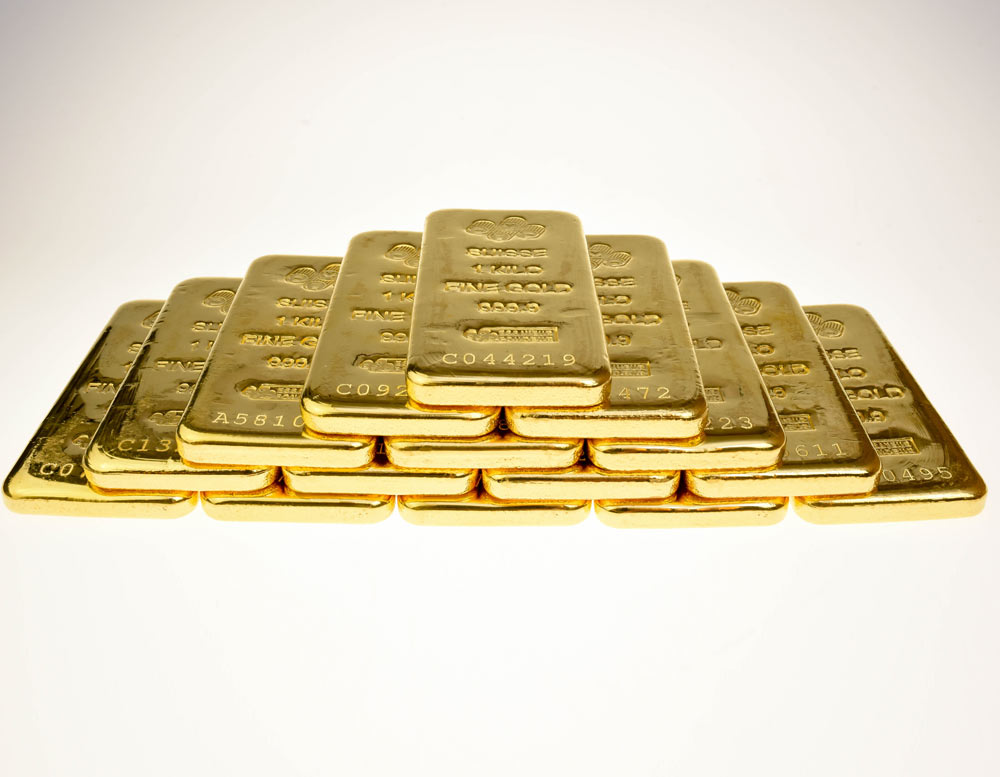
Gold Investment in India – The History
Until 1990, the Gold Control Act forbade the private holding of gold bars in India. There was physical investment in smuggled ten tola bars, but it was limited and often amounted to keeping a few bars ready to be made into jewellery for a family wedding. Gold investment essentially was in 22 carat jewellery.
Since 1990, investment in small bars, both imported ten tolas and locally-made small bars, which have proliferated from local refineries, has increased substantially. GFMS estimate that investment has exceeded 100 tonnes (3.2 million oz) in some years, although it is hard to segregate true investment from stocks held by the 16,000 or more gold dealers spread across India. Certainly gold has been used to conceal wealth, especially during the mid-1990s, when the local rupee price increased steadily. It was also augmented in 1998 when over 40 tonnes (1.3 million oz) of gold from bonds originally issued by the Reserve Bank of India were restituted to the public.
In the cities, however, gold is having to compete with the stock market, investment in internet industries, and a wide range of consumer goods. In the rural areas 22 carat jewellery remains the basic investment.
The Gold Deposit Scheme
The government announced a new initiative in its 1999/2000 budget to tap the hoard of private gold in India by permitting commercial banks to take gold deposits of bars, coins or jewellery against payment of interest. Interest levels can be set by each bank, and deposits must be for three to seven years. Interest and any capital gains on the gold will be exempt from tax. The banks can lend the gold to local fabricators or sell it in the Indian market or to local banks. However, the depositor has to declare the origin of the gold, so that metal bought illegally to hide wealth cannot be deposited. The State Bank of India was the first to accept deposits. To date, the amount of gold collected under this scheme (less than 10 tonnes or 0.32 million oz) has fallen well short of the 100 tonnes (3.2 million oz) that was mentioned when it was launched.
Evolution of Modern Gold Market in India
The introduction of a modern gold market in India: 1990 Abolition of the long-standing Gold Control Act, which had forbidden the holding of ‘primary’ or bar gold except by authorised dealers and goldsmiths and sought to limit jewellery holdings of families.
Imports were then permitted in following three stages:
- 1992: Non-Resident Indians (NRIs) on a visit to India were each allowed to bring in up to 5 kilos (160.7 oz) on payment of a small duty of six per cent. This allocation was raised to 10 kilos in 1997.
- 1994: Gold dealers could bid for a Special Import Licence (SIL) which was issued for a variety of luxury imports.
- 1997: Open General Licence (OGL) was introduced, paving the way for substantial direct imports by local banks from the international market, thus partly eliminating the regional supplies from Dubai, Singapore and Hong Kong.
The OGL system has also largely eclipsed imports by NRIs and SILs. Additionally, significant temporary imports are permitted under an Export Replenishment scheme for jewellery manufacturers working for export in designated special zones.
2001 GFMS data show the breakdown of official imports as:
| Tonnes | Million ounces | |
| NRI & SIL | 3 | 0.1 |
| OGL | 599 | 19.25 |
| Export Replenish | 52 | 1.67 |
| Total Official | 654 | 21.03 |
In 2001 unofficial imports fell because of a reduction in import duties, pushing down the local premium and making smuggling less profitable. Ten tola bars are still the preferred form of gold in India, accounting for 95% of imports.
The Bombay Bullion Association, founded in 1948, was the main forum pushing the government for modernization of the market. It publishes a monthly bullion bulletin.

